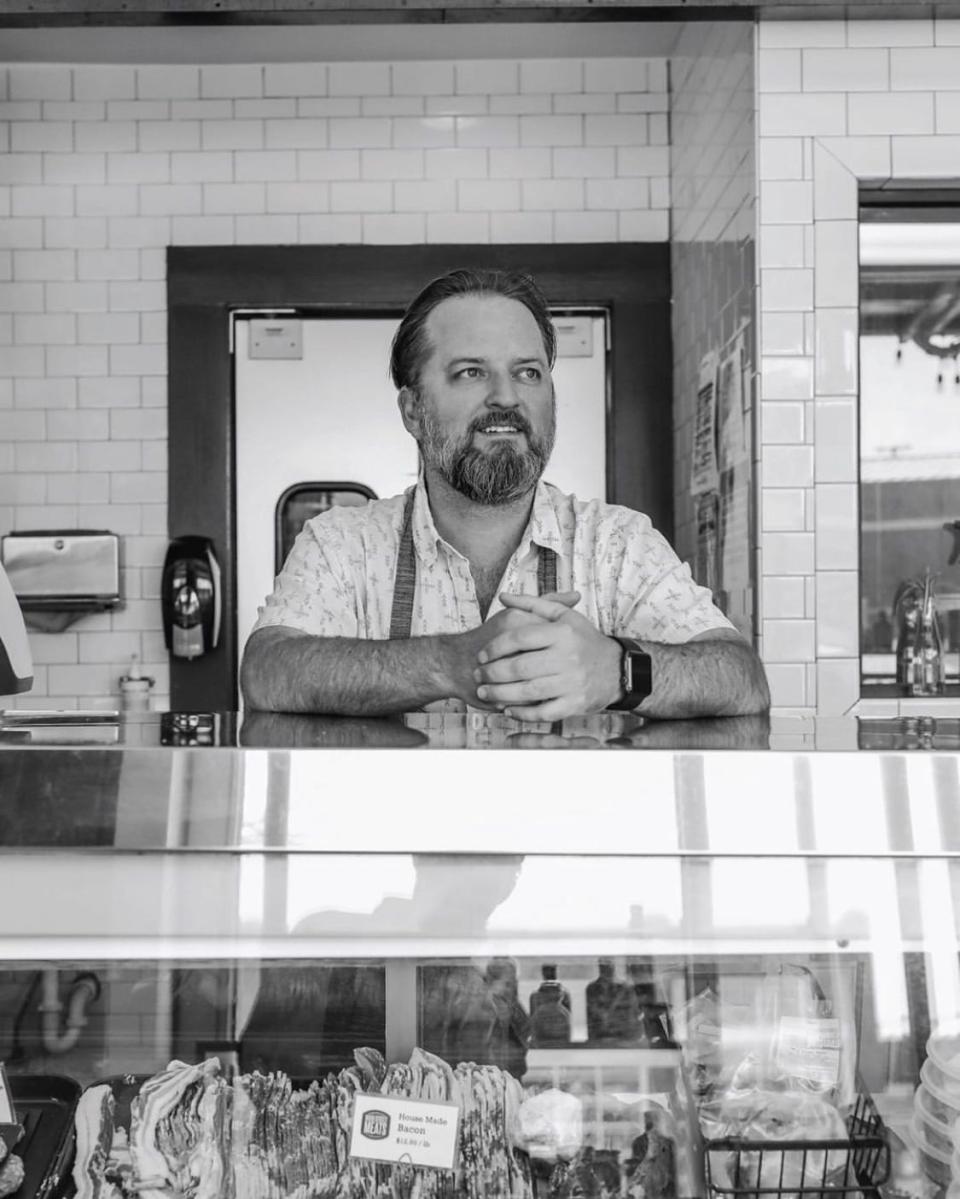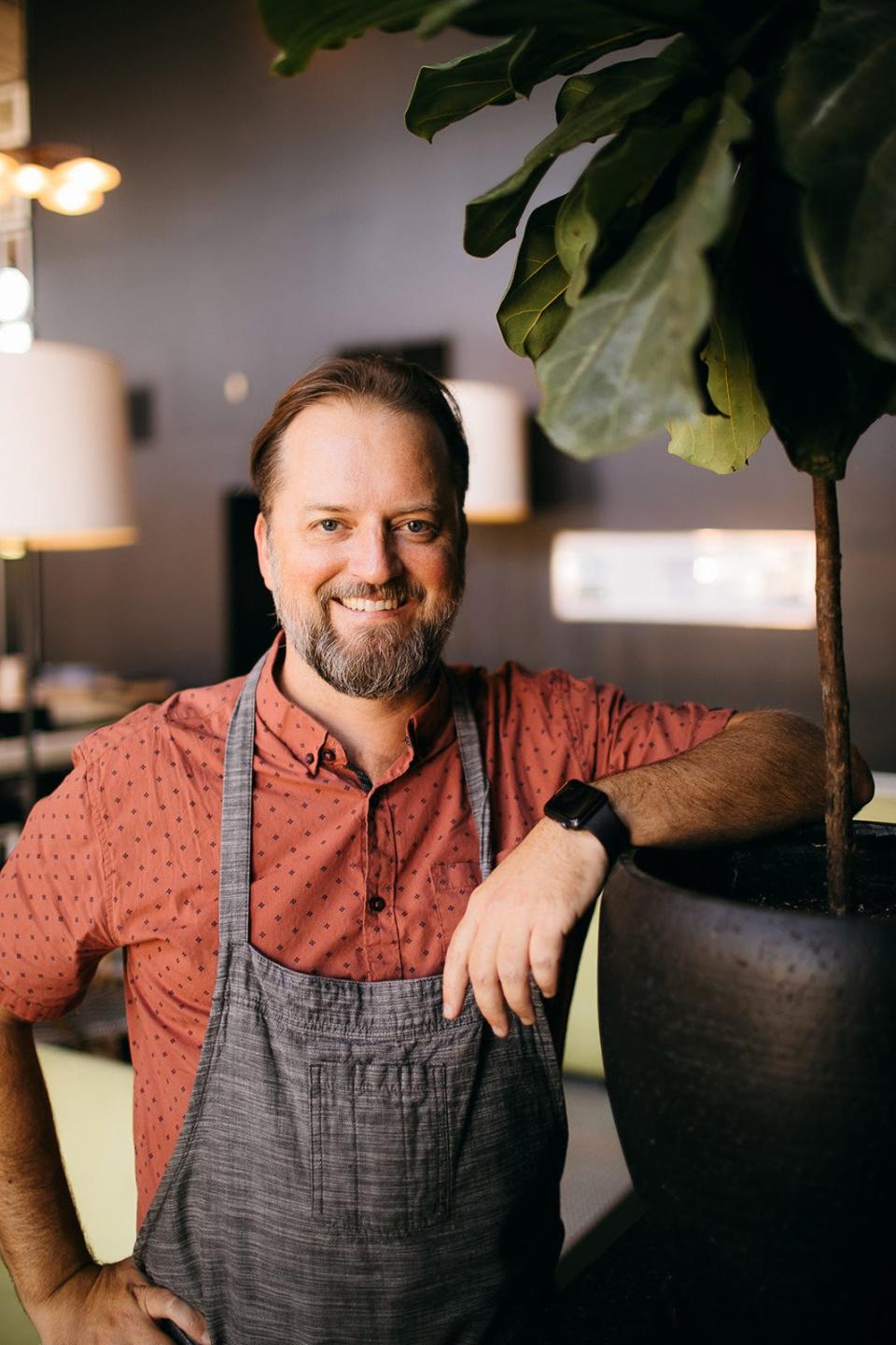Chattanooga chef Erik Niel on how to roast a chicken and make wings for the Super Bowl
Correction: A previous version of this story misspelled the name of chef Erik Niel.
Chattanooga chef Erik Niel's butcher shop, bar and restaurant Main Street Meats was always intended to be a whole animal butchery.
It has a certified USDA processing kitchen where four butchers break down whole animals into primal cuts, turning what isn't displayed for retail sales into value-added products including whole-muscle charcuterie and uncured sausages. The paleo diet people love the livers and other offal. But many American consumers want something more familiar to cook for an everyday meal.

"We have to sell airline breasts and boneless, skinless chicken breasts and buy beef tenderloins," he said. "Because if you don't have boneless chicken in the case, a lot of people are going to walk in and walk right back out again."
The butchery sources top-of-the-line meats from regional purveyors including Bear Creek and Joyce Farms chickens, which arrive whole. Niel sometimes tries to help demystify the process of cooking them.
"Roasting a whole chicken is one of my most favorite things to do," he said.
Learning to roast a chicken is a tool every home cook should have, though many remain intimidated by the process. (Not into learning how? Skip to the bottom of this story for the wing recipe. )
Niel tries to help his customers feel at ease. He keeps a basket of instant-read thermometers ready by the register, which he said is part of the key to easing whole chicken anxiety.
"The fear of undercooking in the South runs deep," he explained.
It's not an entirely unfounded fear. While cases of trichinosis from undercooked pork are increasingly rare, raw chicken remains something you don't want to eat. Avoiding that is simple: Make sure it's cooked to the proper temperature using a meat thermometer.
"If you can take dying out of the equation, it generally makes people feel better about cooking," Niel said.
Niel's roasted chicken tips
To brine or not to brine? Niel said it depends on how much time you have.
If you can wait a day, brining a chicken is simple. Dissolve two parts salt to one part sugar in cold water, stir, then add the raw chicken to the water and refrigerate for at least 6 hours and up to a couple of days. A cup of salt and half cup of sugar is enough for 2 gallons of water. Niel uses brown sugar and adds a little black pepper to the brine. Other aromatics, including thyme or garlic, can be added but aren't necessary.

After the bird is brined, pat it dry. If you're short on time, it's ok to skip the brine; just season the bird inside and out liberally.
If you brined your bird, there's no need to add any extra salt, but a little won't hurt. Season the bird well with a chicken dry rub of your choice, then preheat the oven to 250-275 degrees. Adding fat at this stage is not necessary, but I like to put butter under my bird's breast skin.
You can place your chicken in an oiled roasting pan, or you can rest it on onion halves and whole carrots or halved sweet potatoes like Niel and I do. That way, your side dish cooks with the bird. Niel likes to add a little chicken stock or water to the pan to help keep the bird moist.
More:Why would you cook chicken under a brick? Southern Kitchen explains
Niel roasts his chicken low and slow until the internal temperature is 165 at the thickest part of the thigh. For a 3-4 pound bird, begin to check to see if it's browned and getting close to being done around an hour into cooking. I like to blast mine at 425 degrees and then turn the heat down to 300 for the remainder of the cooking process. It's all about personal preference.
It's also hard to say exactly how long your bird will take to cook, because electric ovens are often wildly inaccurate when it comes to temperature. Just tinker until you get it right.
That's how grandma used to do it.
"She relied on her instincts," Niel said.
Most importantly, let your chicken rest about 20 minutes before you cut into it.
Now for the perfect oven-roasted wings
The right chicken wings should be actually wing sized, not giant.
"If they're huge, they're not going to taste good," Niel said. "The skin-to-meat ratio is what makes them special, which is why I love the flats. The flats have the best ratio of skin to meat."
Separating the flats from the drums is simple. Put the whole wing on a cutting board and move the joint around to see where the two parts connect. Then carefully — very carefully — run a knife through it.
Now, follow this recipe:
Ingredients
3 pounds quality chicken wings, drums separated from flats
Grapeseed or canola oil
Salt
Black pepper
Zest of two lemons (reserve lemons for juice later)
Spiceology “Really Ranch” dry seasoning
Instructions
Preheat oven to 450F. (If you have a convection fan, use it!)
Line a sheet tray with aluminum foil. It makes cleaning up much easier.
Place wings in a large bowl. Drizzle with grapeseed oil, just enough to coat them.
Season with salt, black pepper, lemon zest, and ranch seasoning. Be liberal with this.
Spread wings evenly on the tray in a single layer. Bake at 450 for 20-30 minutes, until the wings are done, nicely browned, and the fat is bubbly.
Overcook the wings! They need heat to make them slightly tender and render all the fat in the skin.
As soon as the wings come out of the oven, squeeze the juice of 1 reserved lemon all over them.
Let cool slightly, and eat. If you need sauce, serve on the side and dip.
This article originally appeared on Nashville Tennessean: Best wings ever: Make these chicken wings for the Super Bowl

